Amstelveen
The 30th edition of Facts & Figures is already in front of you. On January 1, 2024, Amstelveen had 95,014 inhabitants, approximately 600 more than the year before. However, the growth is less than in 2022 (2,000). Over the past 10 years, the Amstelveen population has grown by 12% (approximately 10,000 inhabitants). This growth is expected to continue, because major housing construction projects are planned in the municipality in the coming years.
At the moment, the average age in Amstelveen is 41 years younger than the national average (42.4 years). Characteristic of Amstelveen is the international composition of the population. Our city has 144 different nationalities and 24% of the Amstelveen population has a non-Dutch passport. Slightly more women (52%) than men (48%) live in our city. In addition, we see from the increasing number of visitors that many cultural institutions have recovered after the corona period.
In Facts & Figures you will find all kinds of interesting information about Amstelveen. In addition to statistics about the population, such as age structure, births and deaths and origin, Facts & Figures gives you insight into, among other things, the economic structure, education, culture, sports, safety and employment. For that reason, Facts & Figures is more than our municipality summarized in figures and tables. It shows that Amstelveen is a dynamic, lively municipality in all its diversity.

(Photo Gemeente Amstelveen - 2024)
Tjapko Poppens mayor of Amstelveen
You can also find a lot of information on www.amstelveen.incijfers.nl, a database with current data. You can compile your own tables on themes such as population, housing, business and education. Many figures are available at district level and over several years. As mayor of this beautiful municipality, I like to look at the Facts & Figures (pdf 56 pages), but I hope that this publication also contains valuable and useful information for you. Do you have any questions? Please contact Onderzoek & Informatie, telephone (020) 540 49 11 or e-mail SenO@amstelveen.nl .
Population. On 1 January 2024, 95,014 people lived in Amstelveen, approximately 600 more than the year before. In ten years, the population grew by 12% (10,000 people). The increase is mainly due to housing construction and the associated migration. The projects that will be realized in the coming years are expected to ensure further growth, especially in the south of Amstelveen.
Slightly more women (52%) than men (48%) live in Amstelveen. The average age is currently 41 years, lower than the national average (42.4). Due to a dip in settlement from abroad as a result of the corona pandemic, the average age was temporarily increased in 2021 and 2022. Keizer Karelpark and Waardhuizen-Middenhoven are the largest neighborhoods in Amstelveen with more than 13,000 inhabitants. Westwijk Zuid has the highest percentage of young people up to 18 years old, Groenelaan is relatively the grayest neighborhood.
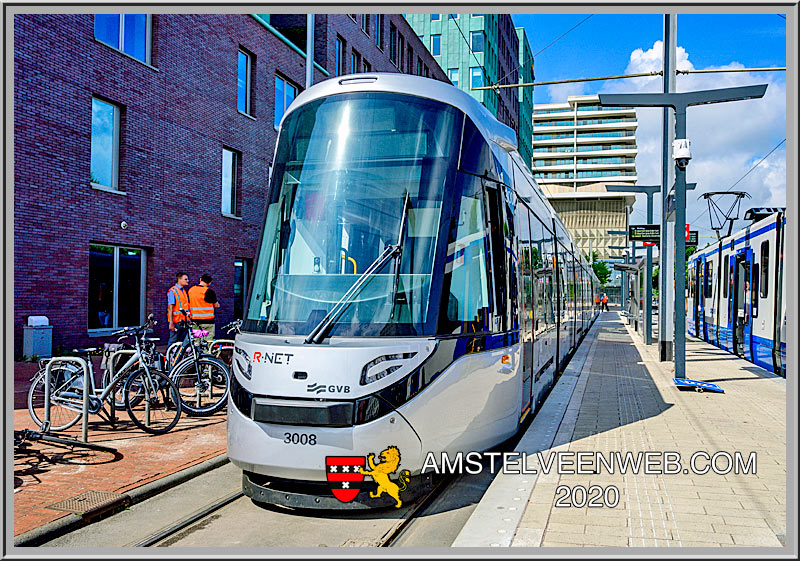
Households. Amstelveen households are predominantly small. The 'traditional' family, consisting of husband, wife and one or more children, is in the minority in Amstelveen. Single people form the largest group with 39% (2024) of households (Netherlands, 2023: 39%). 27% of households consist of a couple with children (Netherlands, 2023: 24%), slightly more than couples without children (Amstelveen, 2024: 24%; Netherlands, 2023: 29%). The percentage of single-parent families (7%) has been stable for years and is the same as the rest of the Netherlands.
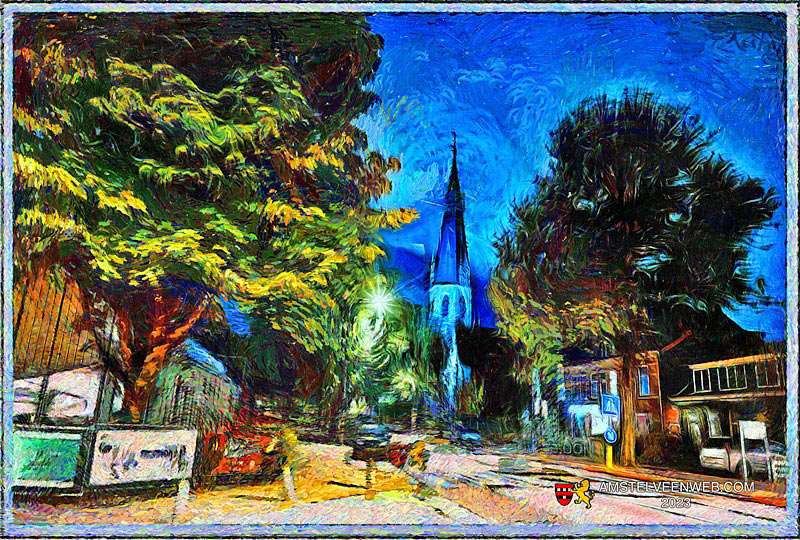
Foreigners and migrants. On 1 January 2024, just over 23.000 people with a non-Dutch nationality lived in Amstelveen. That is 24% of the total Amstelveen population (Netherlands 2023: 8%). A total of 144 different nationalities lives in Amstelveen. The Indian community is the largest with over 4.6 thousand people, followed by the Japanese community. In 2023, the Indian community shrank for the first time since the corona period (by approximately 200). Furthermore, most communities have grown larger compared to last year, with large outliers in the Russian and Chinese communities. In recent years, there has been an almost constant increase in people with a migration background, with the exception of 2021, when there was a small dip in the number of migrants due to corona.

Population development. In 2023, the population increased again. This increase is due to the high number of people who have settled in Amstelveen (migration balance 860), this number is much lower than in 2022, when it was 2,376. The majority of the settlements come from abroad. The natural growth is negative, more people have died than have been born (surplus mortality of 254). The natural decline has remained stable since last year, but in the last 10 years the surplus mortality has increased considerably. This is due to both a decrease in the number of births and an increase in the number of deaths.
Housing. The 95,000 residents of Amstelveen live in more than 43,000 homes. The average occupancy rate is therefore 2.20 (in the Netherlands: 2.19). 2024 is the first year since 2021 that the average occupancy rate in Amstelveen has decreased. Of the homes in Amstelveen, 44% are owner-occupied, 30% are social housing rented and 26% are private rental homes. Compared to the national average, Amstelveen has fewer owner-occupied homes and more private rental homes (Netherlands: 58% owner-occupied, 14% private rental, 28% social housing rented). The housing stock in Amstelveen consists relatively many multi-family homes (Amstelveen: 48% single-family, 48% multi-family and 4% other, Netherlands: 64% single-family and 36% multi-family). The single-family homes consist mainly of owner-occupied homes (64%). Of the multi-family homes, only 27% are owner-occupied. Amstelveen has a relatively young housing stock. The majority of the homes were built after 1960 (81%) and 31% even after 1990.
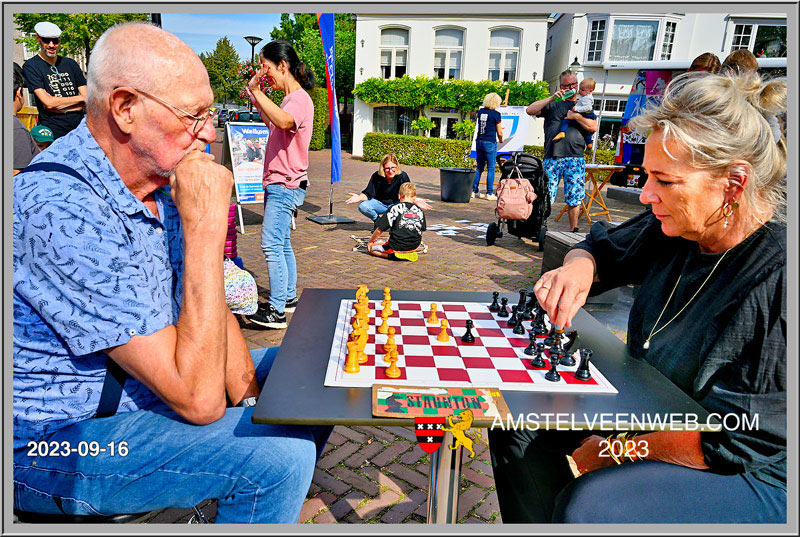
Economic structure. Amstelveen has a favourable starting position. Its location between the economic clusters of Schiphol, Amsterdam and the flower auction Flora Holland contributes to this. Many (inter)national companies have found their way to Amstelveen. The number of SME companies is large and many of them are companies with Amstelveen roots. The number of companies grew by 4.2 thousand in the past 10 years to over 12.5 thousand establishments with 55.7 thousand employees in 2024. The number of employees has also increased by 2%. Business services is the largest industry in Amstelveen. Almost half of the companies fall under this (47%). The share of this industry in the economy has remained the same compared to last year.

Retail. The retail offer in Amstelveen is hierarchically structured: the Stadshart functions as a centre for the entire municipality but also for the region. In addition, there are ten shopping centres with a neighbourhood or district care function. The largest branch of retail in terms of number of points of sale is food and personal care. The total number of points of sale has decreased from 398 to 374 in 2024 since 2022.
Catering. Amstelveen has 187 catering establishments. This number increases annually. There are more snack bars and fastfood restaurants than restaurants in Amstelveen. This is comparable to the national average, where there have been more fastfood restaurants than restaurants since 2020 (Bold Data, 2022). The catering industry is mainly concentrated in the Stadshart, the Oude Dorp and along the Amstel.
Working population and unemployment. In 2023, 53,000 residents of Amstelveen could be counted as part of the working population. The working population includes everyone (between the ages of 15 and 75) who works or wants to work at least 12 hours a week. The working population has increased annually since 2019. Almost half of the working population is highly educated (47% in 2023). This share has decreased by 2% compared to 2022. In the rest of the Netherlands this is less (41%). The net labor participation in 2023, the share of the working population in the total population (working and non-working population), is 74%. Slightly higher than the rest of the Netherlands (73%). The net labor participation has increased slightly in both Amstelveen and nationwide compared to 2022.
Social security. There are social insurances for people who cannot work or need support. From the age of 67, there is the AOW (general old age law). In 2023, there were 16,410 residents with an AOW benefit.
Income. The population of Amstelveen is relatively prosperous. In 2021, Amstelveen households had an average of 58.9 thousand euros per year to spend, well above the national average (€ 49.5 thousand). This figure has increased considerably in Amstelveen compared to the previous year (55.8 thousand). Student households have not been included in this calculation. The highest disposable incomes of households can be found in Buitengebied Noord.
Traffic and transport. The good accessibility and the excellent connections with Amsterdam, with other business locations such as the Zuidas, Greenport and Schiphol and international destinations make Amstelveen an attractive place to live but also to work.
Schiphol Airport. Amstelveen is located a few kilometers from Schiphol. The proximity of the airport is seen by many companies as a favourable location factor. Schiphol is also an important location for companies. In 2022, the number of travellers via Schiphol doubled to 52 million. In 2023, the number of travellers increased again, but only by 18% to 61.9 million. Still many times less than the number of passengers before the corona pandemic (71.7 million in 2019). Freight transport remained the same.
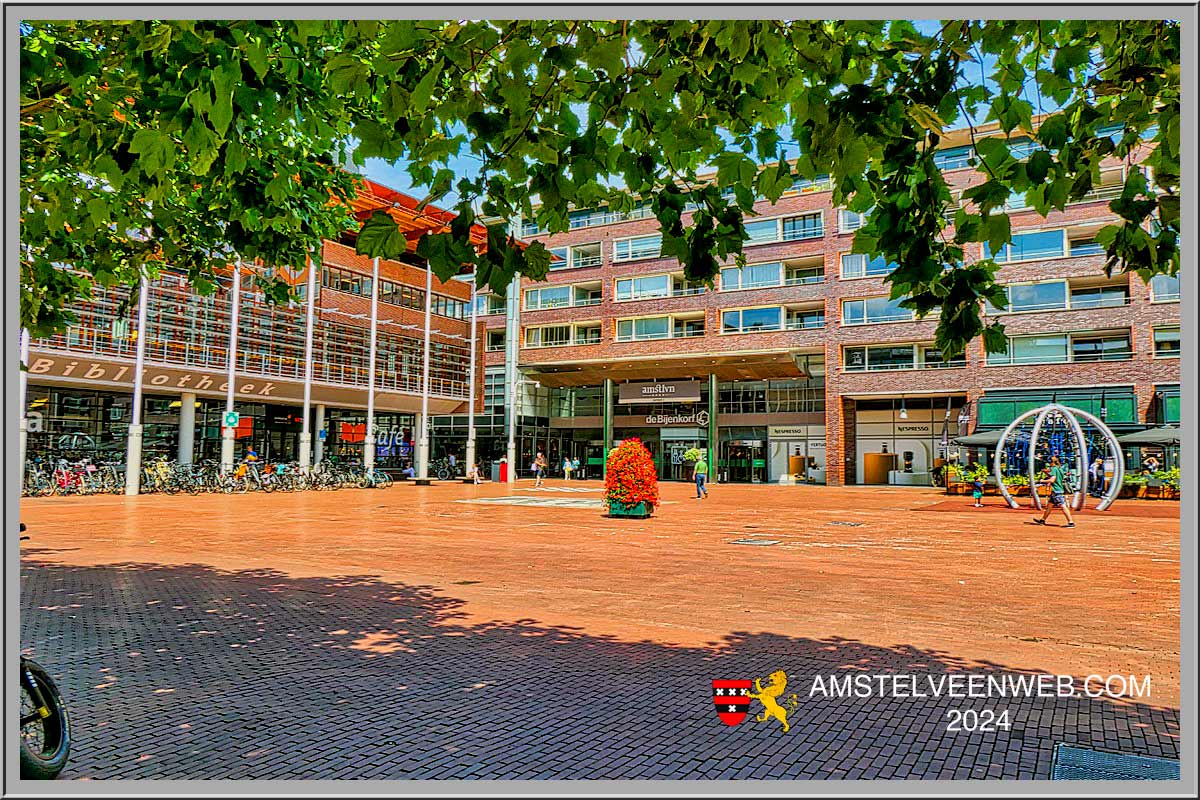
Education. Amstelveen has four secondary schools with a total of approximately 5.9 thousand pupils. This number is slightly lower in the 2023-2024 school year than in 2022-2023. There are also three schools for private education. In addition to primary education, two of the private schools also provide secondary education. In Amstelveen, there are 20 primary schools spread across the districts, including a publicly funded international school that started in September 2019. For newcomers from all kinds of countries, there is also a language school, where children receive intensive language instruction for about a year before they move on to a regular school. There is also a school for special education. The average distance between home and funded primary education is 1.79 kilometers. This is lower than the national average, where the distance is 2.09 kilometers.

International School. The ISA (International School Amsterdam) offers education to pupils aged 3 to 18 (from nursery school to the final year of secondary education) and has a total of 1,297 pupils: 528 primary school pupils and 769 secondary school pupils. There are pupils from 65 different countries. The largest groups come from the United States, the United Kingdom and the Netherlands. Amity International School Amsterdam opened its doors in February 2018. The school now has 421 pupils: 239 primary school pupils and 182 secondary school pupils. The school has pupils from 56 different countries. That is 10 more than the previous year.
Childcare. In Amstelveen, daycare and after-school care are offered at 97 childcare centres. The total number of places for children is approximately 4.3 thousand. The number of places has slowly increased over the past few years, while the number of childcare centres has decreased since 2018 (from 174 to 97). The decrease is mainly due to the number of host parents, probably due to aging or for financial reasons. The number of host parents has more than halved between 2023 and 2024 (from 118 to 43).


Public order and safety. Amstelveen is a safe municipality compared to other municipalities with a similar number of inhabitants. The total number of crimes has increased for the first time in years in 2023. There are a number of notable changes: the number of burglaries from a box, garage or shed more than doubled in 2022, while it fell again in 2023. However, the number of home burglaries has increased by 7%. Furthermore, there is a particular increase in the number of thefts of motorcycles and mopeds. The number of mopeds, scooters and bicycles that have been stolen has risen sharply from 342 to 548. Thefts of motor vehicles have risen from 65 to 89. The number of assaults fell in 2023, while this number rose in 2022. The number of street robberies and assaults (21 reports in 2022, 29 in 2023) and theft of motor vehicles are more common in 2023.
Performing arts. The Schouwburg, the Puppet Theatre and P60 offer a wide variety of performing arts for young and old. In 2023, the theatres are doing well, now that they can recover from the corona period. This is reflected in the visitor numbers. For example, these are higher for the Schouwburg than before the corona period. In 2013, the Schouwburg was visited by more than 160,000 people (137,000 in 2019). The number of visitors to the Schouwburg has grown by more than 40% in one year (114,000 in 2022). The figures for the Puppet Theatre and P60 will be added as soon as they are known.
Cultural institutions. In addition to the performing arts, there are various institutions active in culture, such as the Library, the Cobra Museum and Platform C. Platform C is a merger of the former art lending library, the adult education centre and the music and dance school. The library had 338,000 visitors in 2023 (317,000 in 2022). These are more visitors than in the corona years 2020 and 2021, but the number of visitors to the library is also not yet at the level before the corona pandemic (510,000 in 2019). In 2023, more than 25,000 residents were members of the library, this number has increased by 1000 compared to 2022. Museum JAN also attracted more visitors in 2023 than the average in the years before corona. Figures for the Cobra Museum are not yet known.

Health. In 2023, almost three-quarters of residents aged 18 and over (68%) indicate that they often or always feel fit and healthy. This is a decrease compared to 2022, when 72% felt this way. Two-thirds of young adults often or always feel fit and healthy (62%). This is comparable to the rest of the Amstelland region and is the same as in 2022 (in addition to Amstelveen, the municipalities of Aalsmeer, Diemen, Ouder-Amstel and Uithoorn).
Exercise. Just over half of young people (52%) are physically active in 2023: they exercise 5 or more days a week for at least half an hour. More than half of residents aged 18 and over exercise at least once a week (61%). This percentage has increased slightly compared to 2022.
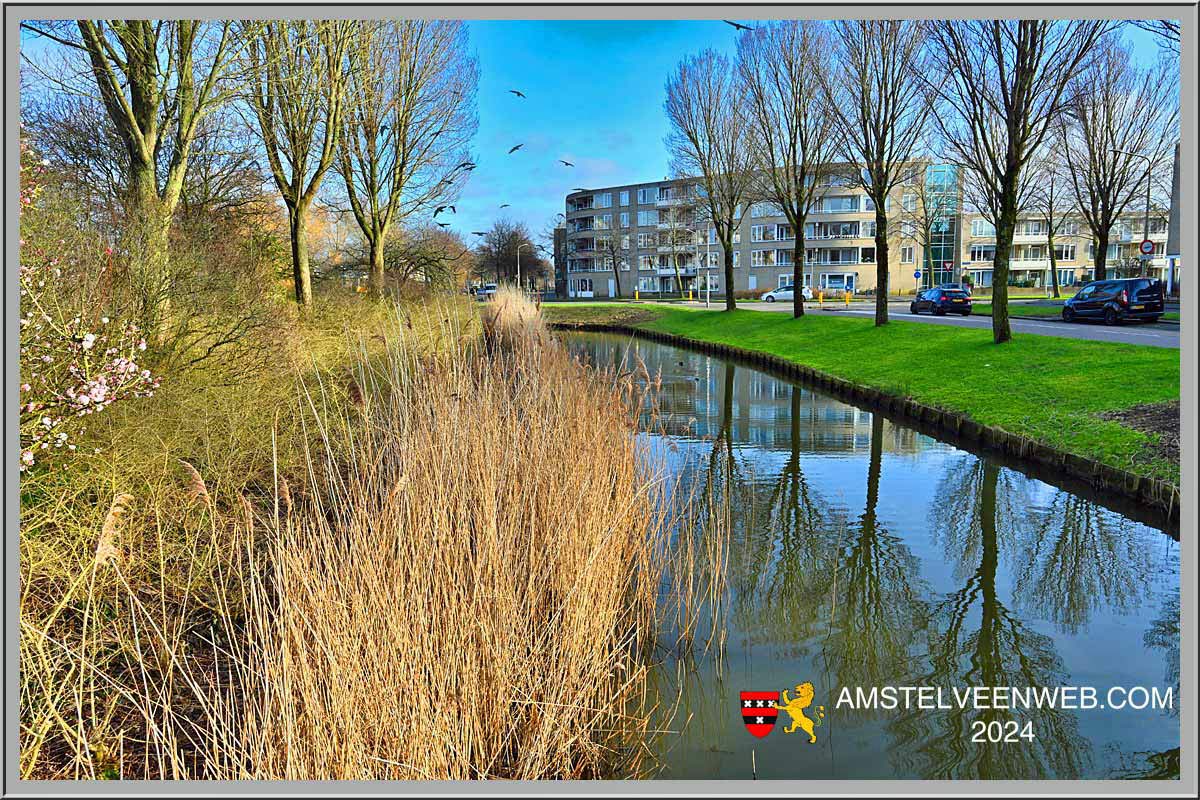
Lifestyle. Smokers often start smoking at a young age. 19% of young people in Amstelveen smoke weekly in 2023, 14% of adults do so in 2022. No data for 2023 are yet available for the second group. The majority of young people (81%) in 2022 have drunk alcohol in the past 4 weeks. Almost half of adults (46%) do not drink or drink a maximum of 1 glass per day. Smoking and drinking behaviour is comparable to that of the rest of the region.
Sports and recreation. Amstelveen has a large and varied range of sports facilities. Most of the 260 sports accommodations are sports fields: football, hockey, tennis, korfball, baseball and softball, athletics, rugby and a cricket field. Amstelveen also has the Meerkamp swimming pool with various indoor and outdoor pools, a practice cycling circuit and two golf courses. These sports facilities are used by approximately 80 sports clubs based in Amstelveen and by many private individuals. In addition to sports facilities, Amstelveen also has almost 300 play facilities or play facilities spread across the various neighborhoods of the municipality.
Energy transition. The municipality's sustainability policy consists of three pillars, namely energy transition, circular economy and climate adaptation. The energy transition is the transition from using energy from fossil fuels, such as natural gas, to sustainable energy sources. A transition to a sustainable energy supply is of great importance, because of the fight against climate change. The gas consumption of homes in Amstelveen has decreased from over 55 million m³ in 2013 to over 43.5 million m³ in 2022. Between 2021 and 2022, a significant decrease of almost 5 million m³ of gas was achieved. These figures have been corrected for fluctuations in temperature. After all, more gas is consumed in colder winters than in less cold winters.
Charging stations. Amstelveen has 15.6 (semi)public charging points for electric cars per thousand inhabitants, making it one of the top 5 Dutch municipalities (Crow 2023). In the Netherlands, this figure is 8.4 per 1000 inhabitants.

(Foto Amstelveenweb.com - 2023)
The members of the Board B and W of Amstelveen from left to right: Alderman Marijn van Ballegooijen (PvdA), Alderman Adam Elzakalai (VVD), Alderman Floor Gordon (D66), Alderman Frank Berkhout (D66), Tjapko Poppens mayor, Bert Winthorst municipal secretary and alderman Herbert Raat (VVD)
Municipality of Amstelveen. The number of members of a municipal council depends on the number of inhabitants. The current council of Amstelveen has 37 members, from 12 different political parties. The council members are elected every four years by the eligible residents. In the last municipal elections (March 2022), the turnout was 52.85%, slightly higher than the national average.
In these elections, the VVD (People's Party for Freedom and Democracy) became the largest political party with 8 of the 37 seats. The board of Mayor and Aldermen is formed by VVD, D66 and PvdA. The civil service organization of Amstelveen has also worked for the neighboring municipality of Aalsmeer since 2013. The more than one thousand employees serve a total of almost 127,000 residents. The figures relate to January 1, 2024!









